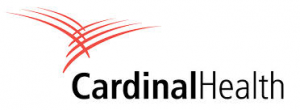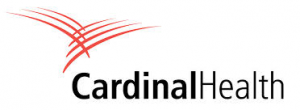Cardinal Health Avoids $1 Million in Workers’ Comp Costs with Ergonomics
05/31/2017

 Headquartered in Dublin, Ohio, Cardinal Health, Inc. is a global, integrated healthcare services and products company, providing customized solutions for hospitals, health systems, pharmacies, ambulatory surgery centers, clinical laboratories, and physician offices worldwide.
Headquartered in Dublin, Ohio, Cardinal Health, Inc. is a global, integrated healthcare services and products company, providing customized solutions for hospitals, health systems, pharmacies, ambulatory surgery centers, clinical laboratories, and physician offices worldwide.
In 2012, ergonomics became one of the healthcare giant’s priorities when data analysis revealed that 50 percent of its recordable injuries resulted from cumulative trauma and manual material handling incidents (lifting, lowering, and carrying).
After analyzing its ergonomics process, the company found that it lacked three key elements. Greg Dowler, Director of Environmental Health and Safety, explains: “First, we had minimal knowledge and training in ergonomics. Second, we lacked a standard approach to evaluating the risk involved in manual material handling; some employees used the NIOSH Lifting Equation to measure it, while others were using the Snook and Cirello Tables and the Sue Rodgers Muscle Fatigue Analysis Tool. Third, our metrics were tied to lagging indicators (rate of injuries and illnesses resulting from musculoskeletal disorder (MSD) risk factors), not leading ones.” A steering committee was formed to transform the process. Representatives from environmental health and safety (EHS), operations, human resources, and operations excellence (OpEx) were tasked with reducing the risk in their highest-risk jobs by 20 percent.
The first step in improving the process was to partner with an outside ergonomics consulting company. In 2013, Humantech was selected because it had the tools to build the elements that Cardinal Health lacked. “When Humantech launched The Humantech System®, we were especially interested,” says Dowler.
The Humantech System is an all-in-one solution for managing workplace ergonomics in production and assembly environments. There are three key components:
- Learn: online training modules
- Do: job improvement workshops
- Manage: data and reporting tools
With the online system, employees can now build knowledge fast. Cardinal Health’s employees complete online training courses when they need it, and at their convenience. “A new employee doesn’t have to wait to attend the next in-person training course. He can be trained his first week of work, and be on the shop floor the next,” explains Dowler.
Employees also attend in-person, expert-led job improvement workshops. A Humantech ergonomist works alongside the team on the plant floor to assess and improve problem jobs. While workers complete tasks, the team records body postures they observe using Humantech’s BRIEF™ Survey, the standardized method for whole-body assessment in The Humantech System. Based on the data entered, the system generates a risk priority score (RPS) for each task, along with a color-coded image identifying the level of risk associated with each body segment. Employees can then use the assessment results to begin implementing improvements.
The assessment results and related improvements are compiled in an easy-to-share executive summary report. “This provides a nice snapshot of the job improvement,” says Dowler. “Before” and “after” photos and corresponding RPS scores, descriptions of the solution(s), the follow-up analysis, and summary notes demonstrate their progress and successes. “If a plant has a good solution, we share it. The additional languages in The Humantech System have also enabled us to share information globally. Any user can log in, select the appropriate language, and view the report, regardless of where they’re located. This has really helped since we acquired Cordis, a part of Johnson and Johnson, which increased our global presence last year,” says Dowler.
To help drive the improvement process further, Cardinal Health’s team uses the management report, the Scorecard, to monitor leading indicators, such as assessments completed and solutions implemented. Tracking leading measures was a goal the steering team established at the start of the process. “The Scorecard is one of my favorite tools,” says Dowler. The report tracks the distribution of risk across all workstations and tasks assessed, as well as the percent reduction of MSD risk related to the solutions implemented. Dowler also finds the Risk Reduction Index Report helpful because it allows him to track risk reduction to determine how well the ergonomics improvement process is being managed over a 12-month period. Users can establish a reduction target and predict the trend of the reductions in future months. “This report makes it easy to track progress toward our risk reduction target of 20 percent at the site and enterprise level,” says Dowler.
Cardinal Health is pleased with its results to date. Since 2012, the company’s sites in the United States and Central America have trained over 730 employees, completed over 2,750 assessments, and implemented over 1,300 solutions. And there is a bonus: the improvements made to the ergonomics process have led to over $1 million in annual Workers’ Compensation cost avoidance. The company plans to continue and expand the process globally.






